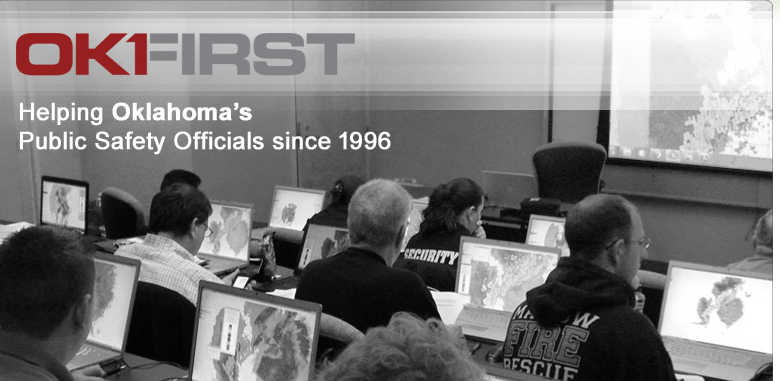
At this year’s 2023 Oklahoma Learning Innovations Summit, it was announced that the Oklahoma Mesonet was named the winner of the 2023 Team Leadership Oklahoma Online Excellence Award by the Oklahoma Council for Online Learning Excellence (COLE). The award praises the Mesonet’s “great talent and expertise within distance learning throughout the State of Oklahoma.” Each nominee goes through a review process by COLE and the Online Consortium of Oklahoma. Those selected as winners receive, among other prizes, an award plaque from COLE, a digital credential, and a letter of recognition from State Regents for Higher Education Chancellor Allison D. Garrett.
The Oklahoma Mesonet has a long history of providing educational outreach, focused on teaching Oklahomans how to effectively use weather data in their individual sectors and communities. These efforts date back to 1992 and target the K-20, Public Safety, Agricultural, and Fire Management stakeholder communities. While most of those efforts were in-person activities, the Mesonet suddenly found itself cut off from those stakeholder communities due to the
COVID-19 pandemic. The Mesonet Outreach Team used their creativity and expertise to continue serving and educating this diverse community of users through a variety of initiatives. Mesonet staff trained 495 agencies across Oklahoma during the COVID-19 limitations of 2020-2022. These groups spanned the gamut from tribal organizations to public schools to city and county entities to state and federal agencies.
IN 2020, the Mesonet’s Public Safety outreach program, OK-First (https://www.mesonet.org/index.php/okfirst/ ), created more than 60 ADA-compliant training modules to provide online classes to public safety officials due to the pandemic. OK-First achieved its largest training total in its 25-year history in 2021 when it offered eight of its 10 classes online due to continuing
COVID-19 concerns, certifying a total of 554 public safety officials. Similarly, the Mesonet’s Fire Management outreach program, OK-FIRE (https://www.mesonet.org/index.php/okfire/home ), switched its in-person workshops—typically held at various regional sites across Oklahoma—to virtual training in 2021 and 2022 with enormous success.
The Mesonet’s K-20 (https://www.mesonet.org/index.php/earthstorm ) outreach program has been active in Oklahoma’s Science Olympiad since 2013. The K-20 outreach program manager helped the Science Olympiad move online during the
COVID-19 pandemic, serving as an Event Supervisor. For the first time in its history, the Oklahoma Science Olympiad opened their Invitational to participants from other states. As a result, the online event allowed teams not only from Oklahoma, but also from California, Kansas, Maryland, Minnesota, New York, Texas, and Washington.
Two of the Mesonet’s longer-lived online educational efforts include the Mesonet Weather Report (https://www.youtube.com/@SUNUPTV ) and the Mesonet Ticker. The Mesonet Weather Report is geared to Oklahoma’s agricultural community, and is aired each Saturday and Sunday morning on Oklahoma State University’s popular “Sunup” program on OETA. The segment is then made available to the online community through YouTube. The Mesonet Ticker is a unique and creative online educational tool focused on communicating weather and climate information to Oklahoma’s citizens and decision-makers in an engaging narrative.
The Ticker is sent in e-mail format and then made available online through the Mesonet’s social media accounts and apps. It is common for these posts to reach more than 100,000 views and be shared by hundreds of individuals, media, and organizations.
The Oklahoma Mesonet—Oklahoma’s Weather Network—is a system of weather monitoring stations located across the state’s 77 counties, designed to serve Oklahomans by providing real-time and archived weather and climate information.
The Oklahoma Mesonet is a partnership between Oklahoma State University and the University of Oklahoma and is operated by the Oklahoma Climatological Survey (OCS). This partnership was established in December 1990 and statewide data have been continuously collected since 1994.















